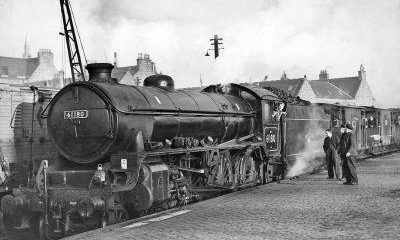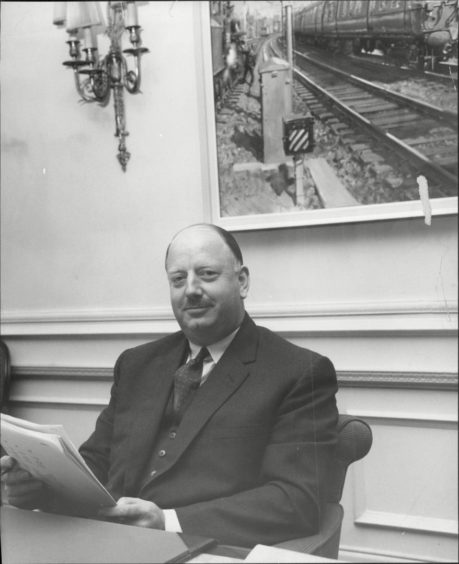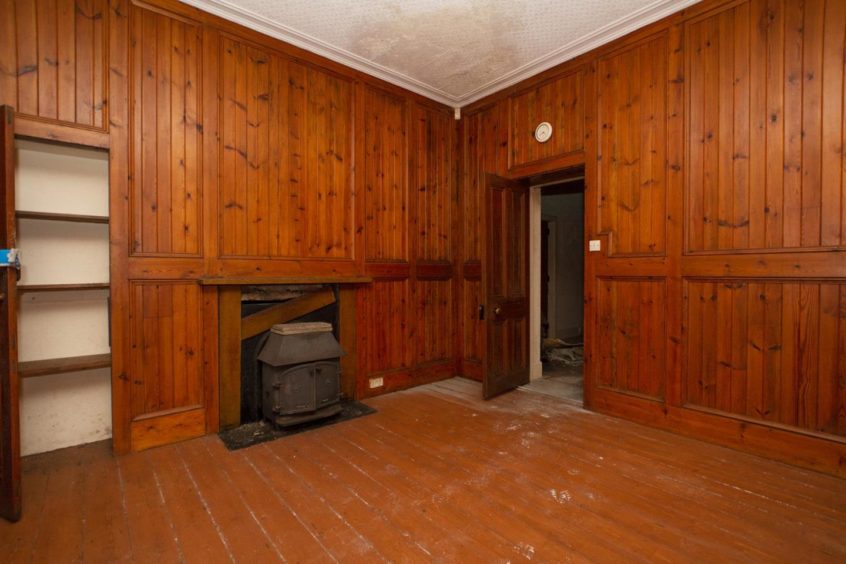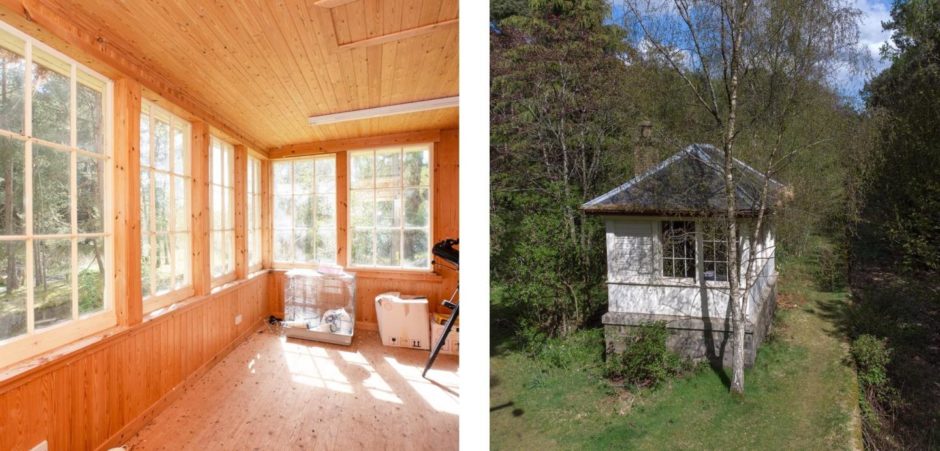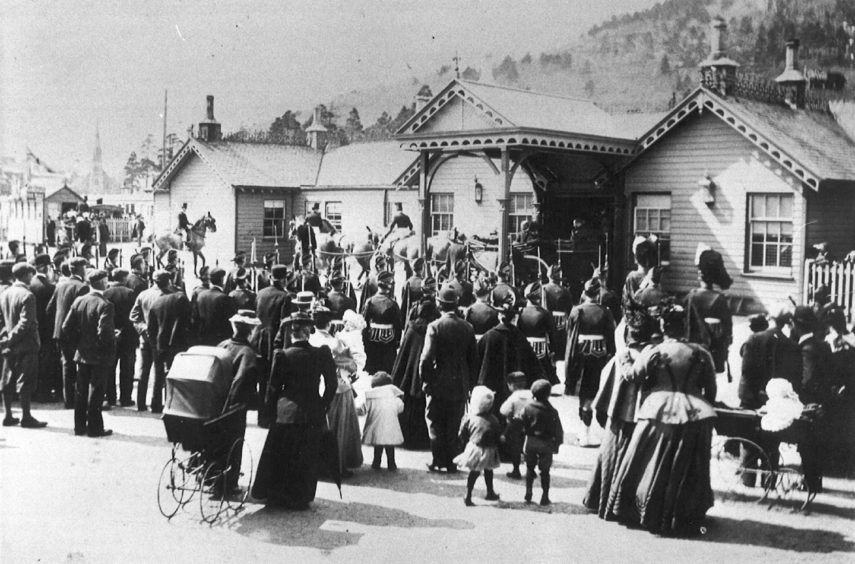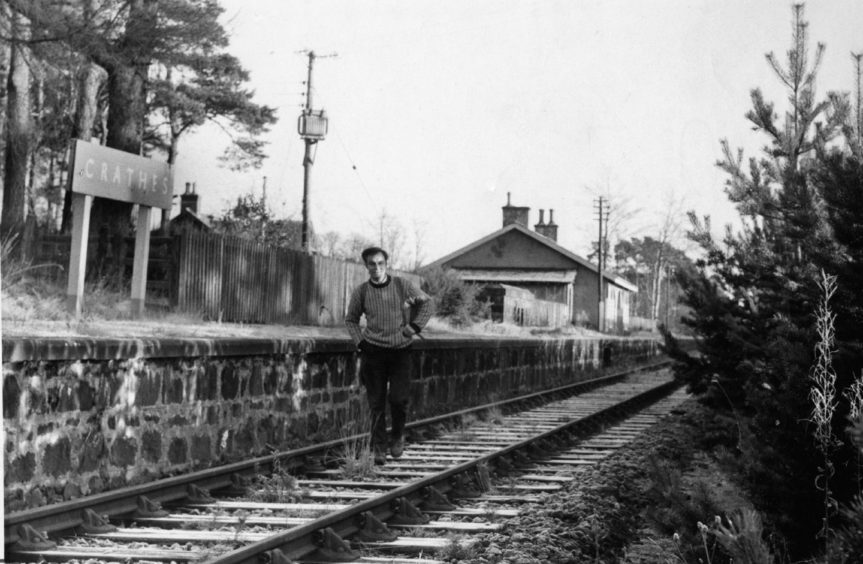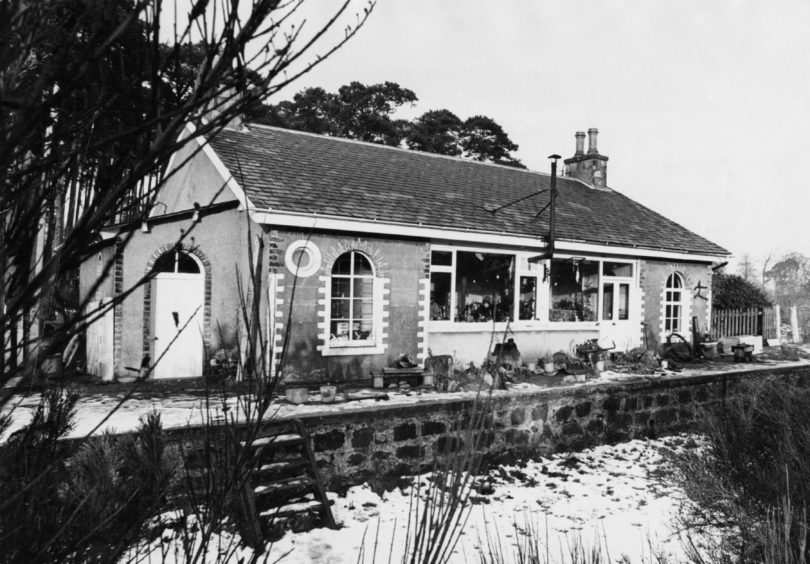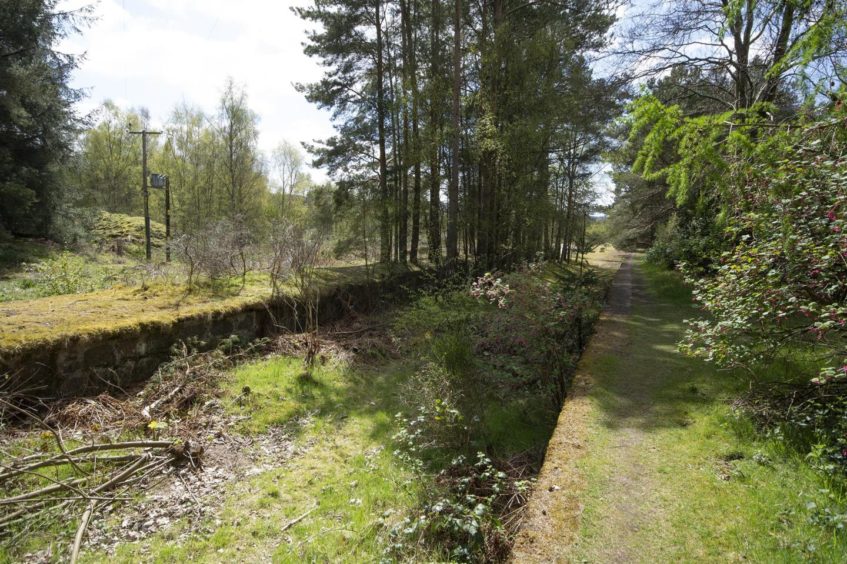It’s a railway lover’s dream come true – the chance to buy a Victorian former station house with reconstructed signal box in no less a location than Royal Deeside.
Crathes station – sadly closed thanks to Dr Richard Beeching in 1966 – is on the market, with many original features retained amid later renovations.
The original floor of the waiting room, its wood panelling and ticket kiosk are part of the living room.
The ticket office is now a study, complete with the original ticket counter, built-in safe and fireplace.
The ladies’ waiting room is now a library, with the original fireplace retained.
The piece de resistance must be the signal box, reconstructed on the north platform by a previous owner for use as a summer house.
The property is on the market with ASPC, offers over £225,000.
There are 176 years of history to conjure with at Crathes station, it first being considered as a halt on the Deeside railway line as far back as 1845 when a line from Aberdeen to Ballater was mooted.
It finally opened on February 2 1863 with four trains a day, First or Third class tickets for passengers and cheap tickets at the weekend.
In its heyday the Deeside line carried 72 trains a day, including the suburban service, and with Balmoral near the Ballater terminus, it probably carried more Royal passengers than any other line in Britain.
No wonder it became known as the Royal Deeside Line.
Queen Victoria wouldn’t contemplate the line terminating at Braemar however- too intrusive for comfort- so it terminated in Ballater.
To keep the Queen up to date with the affairs of empire, a messenger train ran overnight from Aberdeen when the royal family was in residence.
Royal family members all the way to HRHs Charles and Anne used the line until Beeching’s axe finally fell.
Row between landowner and railway
But the Queen’s messenger train was not popular in the 1870s and 80s with landowner Sir R. Burnett of Leys near Aberdeen, who, in his own business interests, sought legal action to defend the original 1853 agreement that all passenger trains should stop at Crathes station.
It appears that in 1877 and 1881, ‘difficulties’ arose with regards to the Queen’s messenger train, the Post Office trains and excursion trains which the Great North of Scotland Railway Company claimed to be ‘beyond the scope of the agreement’.
The case went through the courts for years, becoming more notorious each time, until it reached the Lord Chancellor and even the national press was taking an interest.
The Evening Telegraph reported his initially diplomatic judgement.
“He said that but for the decisions of the learned judges in the court below he should not have had the least hesitation in pronouncing in favour of the agreement and of Sir Robert Burnett’s claim to have all passenger trains stopped at the Crathes Station.
“Out of respect to the learned judges who had previously adjudicated upon the case, he had most carefully weighed their opinions but still found himself unable to agree with their conclusions.”
The chancellor moved that a declaration should be made, binding the railway operator to stop regularly at Crathes Station for the purpose of taking up and setting down passengers.
Three law lords agreed with him.
Then the chancellor shed all attempt at diplomatically disagreeing with the previous judges.
It was gloves off, with the chancellor enlisting support from The Merchant of Venice.
He continued: “It had been charged against the appellant (Sir Robert Burnett) that he was like Shylock.
“Well, if he had tried the case of Shylock v Antonio he would have decided in the same way as did Portia, although not altogether for the same reasons.
“Shylock never could call the pound of flesh his own, for it had never been appropriated to him, and he could only get it by the commission of the crime of murder.
“If the pound of flesh had been appropriated to Shylock he would have been entitled to it.
“The distinction between that case and the present was a material one… Sir R. Burnett was clearly entitled to the fulfilment of the terms of his agreement.”
Crathes was first built as a single platform station, with a later eastbound platform.
The signal box opened in 1891, but was closed and taken away in 1954.
One of Crathes station’s previous occupants is Scottish engraver Malcolm Appleby MBE, who established his workshop there in 1966, and kept it until 1996 before moving to Grandtully, Perthshire.
The central part was his workshop, with the front partition built to enclose a seating recess.
Appleby valued his privacy.
“There are no welcome signs on the rough track that leads to Malcolm Appleby’s workshop,” reported the Press & Journal in 1976.
“He does not encourage casual visitors to his peaceful lair.
“Long spells of untroubled concentration are needed for his delicate and sustained work as an engraver.”
A functioning bygone of the age of steam is nearby at Milton of Crathes, where the Royal Deeside Railway has moved and rebuilt the Old Meldrum station, built 1856.
The old line has now become the 41-mile long Deeside Way starting at Duthie Park in the centre of Aberdeen and continuing close to the River Dee through the heart of rural Aberdeenshire to Ballater in the Cairngorms National Park.
Meanwhile train driver Jordan Jack has launched an ambitious campaign to get Aberdeen “back on track” and reconnect north-east communities with discontinued rail services.
The Campaign For North-East Rail (CNER) has set out plans to bring modern infrastructure to the “forgotten” corners of Aberdeenshire, cut off from the network since the Beeching cuts in the 1960s.
Mr Jack’s plan, which he worked on with engineers for six months, details the case for train links to Peterhead, Fraserburgh and Banchory, with a stop at Crathes back in the frame.
